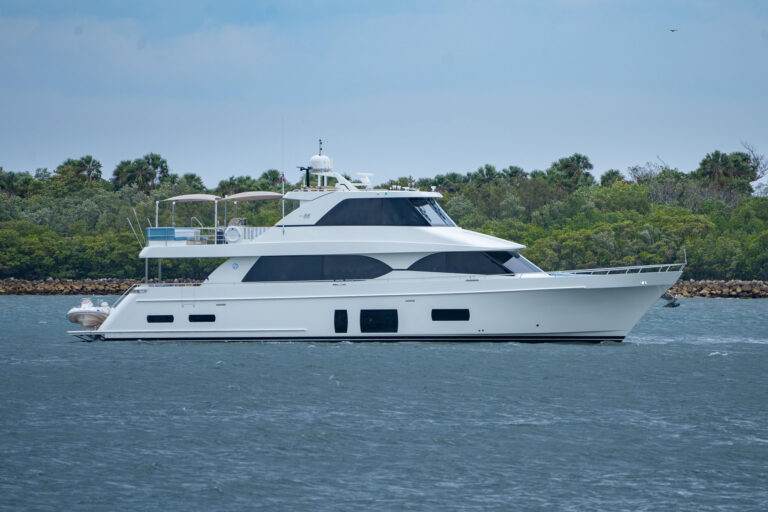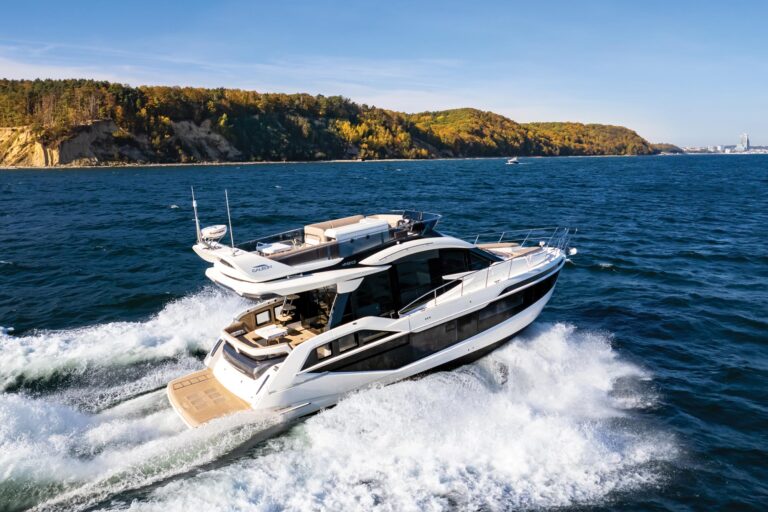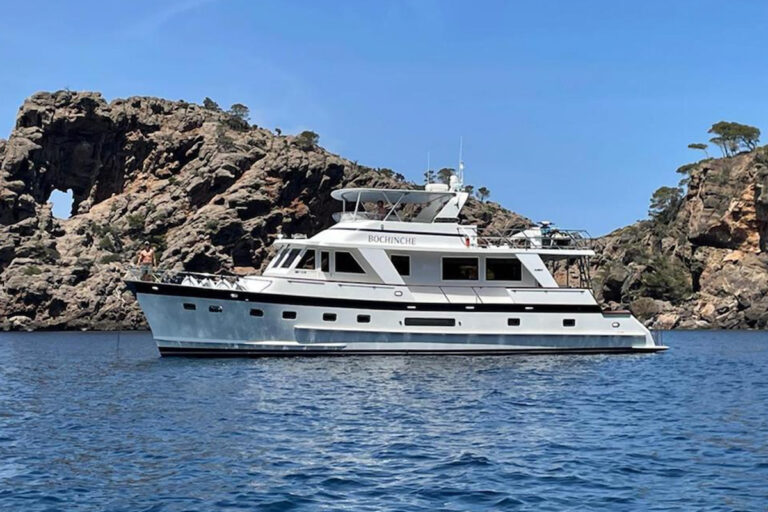After suffering the crowing of a scribe in the pages of another brand who seemed to think five years of reviewing boats was more or less a lifetime (the implication being that he was something of an expert’s expert), I’ve decided I need a new handle. When you’ve been around as long as I have, something more august than Editor at Large is needed-“Senior Editor at Large”, perhaps.
But while it’s tempting to crow a bit, I prefer to reminisce. It was just 20 years ago that an old friend at Yachting magazine asked me if I might be interested in writing about large yachts. Large, of course, is a relative term in the cycle of this sport. In 1986 post-Depression, post-war(s) and post an assortment of other historical milestones, anything measuring on the far side of 80 feet was “large”. At the time, there were just a handful of builders offering such fare, and I was fortunate enough to be providing design services to one of the industry’s more prolific players, Broward Marine.
Boatbuilders and boat designers rarely see eye-to-eye on anything related to boats, so it was with some glee that I shared my new credentials as a consultant to Yachting magazine with those at the yard who brandished saws and torches. It was a big deal to me and I am quite sure it meant something to them as well. While they’d never admit it, they were indeed jealous, as most of us in the marine industry grew up with Yachting in the short stack of preferred reading tucked beneath our bunks. I admit that the fantasy of being a photographer for that magazine with the little bunny had crossed my mind as a youth, but an opportunity to write about my passion for boats in the book that launched my lust for the pastime was just as titillating.
My first boat review was an unexpected challenge. I confess that I kept this and my “expert opinion” more or less to myself, for she was as foreign to me as she was to our readers. She was a large Italian motoryacht that looked something like a bus that had been heated and stretched like an elastic band. She wasn’t unattractive, mind you, it’s just that she was unfamiliar to my conservative American eye. How so? It might seem amazing today, but 20 years ago the Italians, and most Europeans for that matter, had little interest in the American market.
A European friend who was also a yacht designer defined the problem as he saw it. “You silly Americans only think of money. When you don’t have it, you want it; when you do have it, you want more; and when you get more, you can’t get enough. So why bother building a boat? he asked. “You’ll never have time to enjoy it.
My friend was only sort of right. While Americans may focus on making money, we also enjoy boats, a combination that in ten short years drove the custom market well over 100 feet and advanced the threshold in linear feet at which fiberglass production was profitable. Years ago, when I visited Italy with American marine industry veteran Wes Dickman, I listened “politely as he explained his plan to introduce Ferretti to an American market that he was convinced was ready for Euro-fashion. His endeavors complemented the pioneering efforts of companies like Azimut and helped open the floodgates for a fleet of designs that had been foreign to our shores. American yacht designers and builders responded in kind and for the first time in my design career I wasn’t ejected from the shipyard for using ship curves. An Italian friend who peddled design in those days suggested my business could be even better if I took up smoking and added a few vowels to my name, but “Coyleini” just didn’t roll off the tongue.
My literary debut in 1986 also coincided with the launch of the Bertram 37 Convertible, a boat that was considered by many (including yours truly) to be quite advanced in terms of design. Our beloved Anhinga is a 1989 edition and our exploits aboard her with family and friends helped launch this column. Most of Florida and much of the Bahamas has passed beneath her keel-mostly undisturbed. She is still tugging at our dock-and our hearts-as I pen these words.
One must be passionate about boats to write passionately about them. While Anhinga’s stitched fiberglass and carbon reinforcements are still considered high-tech, her diesel power, like me, is old school. Advances in yacht design and propulsion are easier to measure with two decades of sea-trial reports prepared for Yachting in hand. Even so, for me yacht design and performance is measured in more than numbers-I remember every boat.
While I may have a few years on the scribe whose gushing caught my eye, I wouldn’t dream of challenging his expertise. I am respectfully suggesting that given a bit more than five years of service, his words might gain a richer patina. In this light I confess that I, too, am still a humble student, for I am a junior to most on our team at Yachting. Like me, our writers were born in the bilge with salt in their skivvies. These are just the sort of folks you would expect to find laboring to fill the pages of a magazine that is approaching its 100th anniversary.
I know what you’re thinking… “Coyle, you call what you do work? You’ve got the best job in the world… What could be more fun than spending time on the water and writing about it for Yachting magazine?” And you know something? I think you’re right!









